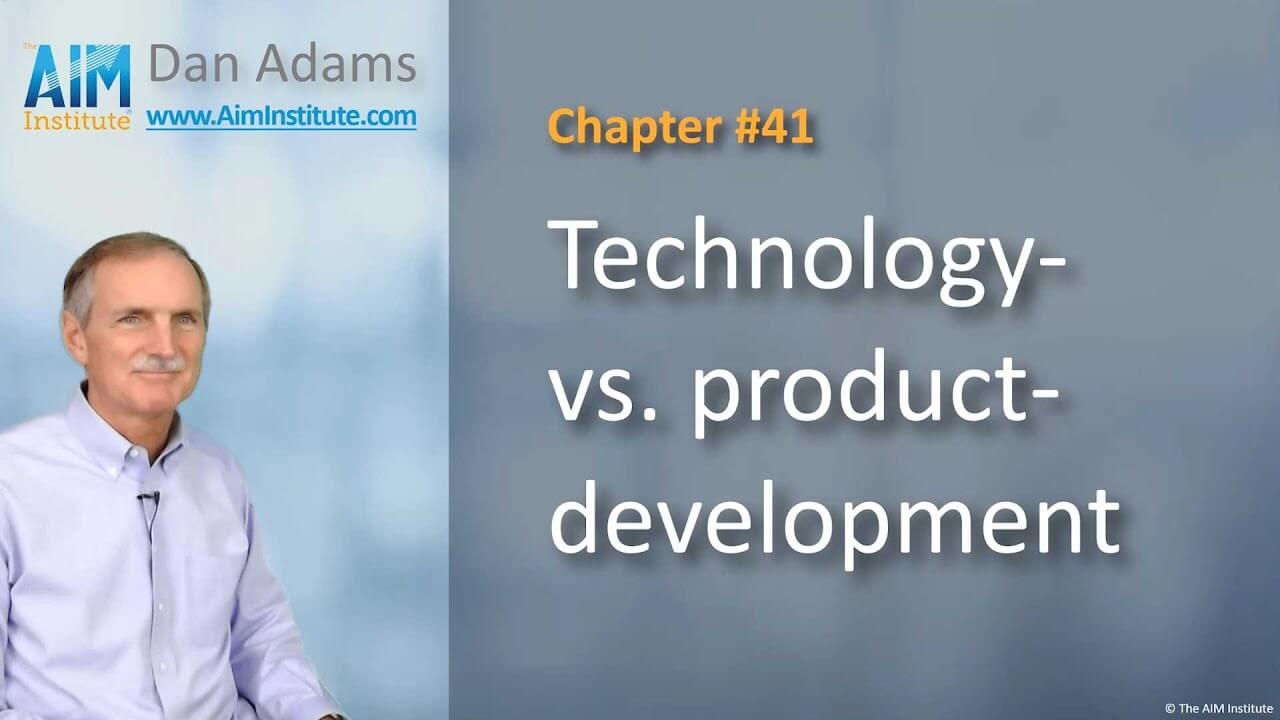B2B Organic Growth Series: Chapter #41
Technology- vs. product-development

Subscribe to the series. Get 50 free videos, sent daily or weekly.
Technology development is science-facing; product development is market-facing. The former turns money into knowledge; the latter turns knowledge back into money.
b2bgrowth.video/41 Video length [2:34]
Transcript of Chapter 41
Do you clearly distinguish between Research and Development?” Or to put it another way, do you manage technology development differently than product development?
Technology development is science-facing, while product development is market-facing. The ultimate purpose of all this work is to satisfy unmet market needs. Technology development turns money into knowledge… and product development turns knowledge back into money.
The more you strengthen these links, the more efficient your money conversion process is. Open Innovation—seeking external technology—strengthens this link. Technical brainstorming strengthens this one, and customer interviews strengthen this.
Keep technology and product development separate if you want to avoid confusion and inefficiency. For instance, milestones on a Gantt chart are great for product development… but good luck scheduling technical breakthroughs in your lab.
This “separation” thinking applies to customer interviews as well. In an earlier video, we said you have three ways to handle your cool technology: Door #1 is “technology push,” where you lead with your idea… and that does not work well. Door #2 is to ignore your technology. But this doesn’t seem right. We can all point to success stories based on exciting new technology.
With Door #3, you test your idea silently. That is, you don’t mention your technology, but rather focus your interview entirely on customers’ desired outcomes. After the interview, check if your new technology is a good match for the top customer outcomes you heard. If it is, you have unbiased evidence for using your technology. Otherwise you need to find a different technology for this market.
Here’s what this means for your stage-gate process… which by definition is product development, not technology development: Never mingle commercial feasibility and technical feasibility work in the front-end.
Why would you ever work on solutions for a target market until you knew what they wanted? And yet this happens all the time, as companies fail to separate technology development and product development.
Comments